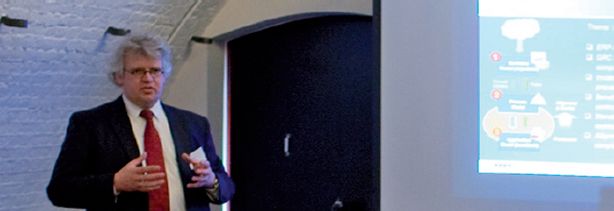Implementing or upgrading an Enterprise Resource Planning (ERP) system such as Oracle or SAP is an investment and effort that begins with strategic planning and extends into implementation and well beyond. In order to realize business value, improve performance and sustain compliance under the post-Sarbanes-Oxley, Basel II and other regulatory mandates, organizations are seeking to utilize ERP’s software functionality to the fullest to help achieve their business goals.
To help optimize the return on investment, organizations should seek and maintain an ERP environment that integrates and optimizes business processes and technology to realize process and control efficiencies, cost reductions, and effective compliance management.
Introduction
The main objective of ERP implementations is to optimize the IT environment supporting the business processes in such away that the strategic objectives can be achieved in the most optimum way. Accordingly, the focus is aimed at realizing business benefits with the use of an ERP system as a vehicle.
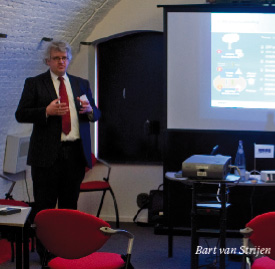
‘Years of financial control focus’
In the last couple of years, partly as a result of SOx and Basel compliancy, the focus of organizations has centred on Risk & Compliancy. As a consequence of this, the focus within ERP environments was on the definition and maintenance of financial control frameworks. And within this development, the set-up of a reliable and consistent application and process model was the key point of attention, whereas alignment between the business model on the one hand, and the process model and application model on the other, was not highlighted.
It is interesting to see that, despite significant effort, only a limited number of organizations have succeeded in building control frameworks that mainly consist of automated financial controls (many organizations still rely on manual controls). Moreover, quite a few organizations are facing difficulties in using the (financial) control frameworks for real business process monitoring and optimization. As it is expected that by 2012 the number of regulations will double, the point of concern to be raised is that the focus will centre too much on ‘being in control’ without using the real benefits of the ERP investments. Especially in times of difficulty, like today’s financial crisis, the pressure to realize business value with ERP systems is becoming increasingly acute.
To realize business value associated with GRC, organizations should evaluate their organization maturity of governance, risk management, and compliance with laws and regulations (see Figure 1). As mentioned, many organizations are still not in a position to grow beyond control ERP integration (phase 3). In order to realize this, it is important to understand that governance is critical to an organization’s success and is therefore also a critical ingredient for successful ERP implementation. Governance is the management of strategic objectives. It is more than compliance; it represents the structuring and management of information systems (including ERP systems), people, technology and controls to effectively support the achievement of the organization’s goals. Effective governance will help control risks, reduce costs, improve performance, and deliver meaningful business benefits.
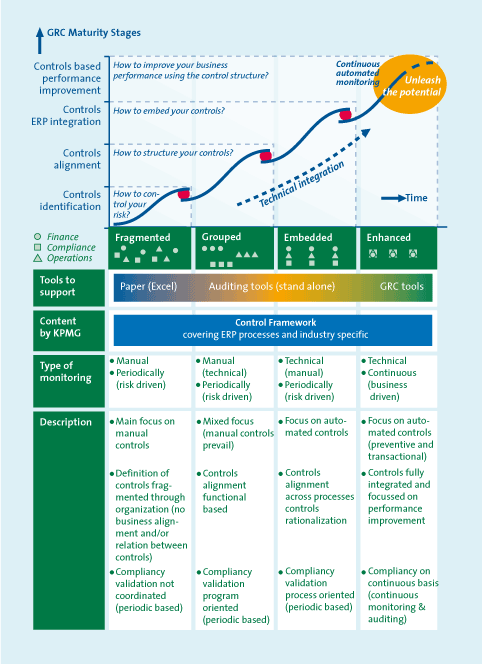
Figure 1. Maturity levels GRC (source KPMG).
When translating this to the maturity levels of GRC, this does not automatically imply that an organization has to be at least at level 3 to be successful. However it is obvious that the more an organization makes use of the capabilities of the ERP system, the easier it will be to apply a solid governance model.
ERP implementations in real life
Unfortunately, practical experience shows that ERP implementations often become projects in which budget and time are significantly overrun. Because of these problems, ‘making the ERP system operational’ becomes the main target instead of the generation of a system that really supports the strategic objectives.
Recent studies show that the main challenges faced by organizations are related to the alignment of the system with the business or v.v. This is remarkable, as many organizations are still aligning their ERP system to their business rather than the business to their ERP system.
The starting point for many ERP implementations is the process model (level 2), which is also understandable of course, as a complete redefinition of the business model (level 1) is not realistic in many cases. Unfortunately, during an implementation many organizations move directly from the process model to the application model (level 3), without performing a validation to check if the future business model will still be properly supported by the process and application model. The risk of not performing this validation is that the ERP system will not support the overall business objectives, meaning that the ERP investment will result in suboptimization.
When is an ERP implementation successful?
Effective use of ERP software (differentiator for running your business) assumes thinking into integral functionality based on a standardized process model for those entities that are going to use the ERP solution. In order to realize this, it is essential that, from the process model, a validation is first performed against the future business model before translating these requirements into the new process and application model. From this perspective, implementing ERP means more than implementing merely an IT solution. More importantly, it means the transformation to a standardized process model. Localization should be defined, based only on legal requirements and a select number of specific local business requirements (definition of those topics through a business-case-driven approach). ‘Something to think about: IT will follow the organization (question is how to define organization?)’ This approach requires managing supply (IT) and demand (business), addressing all roles in Figure 2 to bring your organization competitive value through ERP systems.
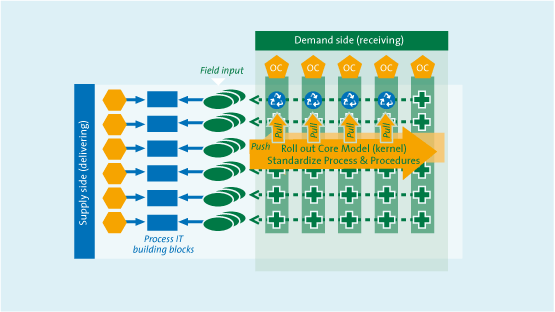
Figure 2. Supply versus demand (source KPMG).
However, organizations face many issues in completing this approach and managing demand and supply in an effective manner, which jeopardizes the goal of the ERP implementation. What we see is that, after organizations have finalized part of a growth curve in which they have implemented an ERP and successfully benefit from automating manual processes and from the (application) controls provided by the ERP, both IT and business have put so much effort in getting the ERP up and running that the organization forgets to evaluate the business case. And, in most cases, the business case was not only about being in control but also about creating competitive value.
During the 2008 Information Seminar, the audience gave some striking comments with regard to the ERP business case. In more than 50% of the cases, there was no business case at all or the business case was never evaluated. The question as to what constituted the main driver for ERP implementation evoked answers such as ‘standardizing processes’, ‘cutting operational costs’ or ‘increasing financial control’. But why was never any attempt to evaluate these goals within a business case? The main reason was that ERPs are hard to evaluate in terms of financial KPIs since the benefits are of a qualitative nature rather than a financial one. Another striking comment was that companies are so convinced that the company can benefit from ERP implementation that a business case is simply not required. However, 90% of the audience stated that they have benefited from their ERP implementation in terms of optimizing business and financial processes. But have these companies implemented an ERP from which they can create value rather than merely preserve it? 75 % of the attendants stated that their EPR is not ready for value creation. In the following sections, we shall give our view on why companies find themselves in this situation and are unable to create value from their ERP implementation.
The ERP implementation curve
The organization recognizes or should recognize that the implementation is only the first part of a growth curve. But improving business performance is also about completing the second and final phase of the curve (see Figure 3). To do so, organizations should be willing to reassess their ERP landscape to be able to create the competitive edge which the ERP can provide them with. But looking at the ERP landscape from a performance point of view differs from looking at the ERP landscape from a control point of view. The question is how to get the organization to transform so that it is performance-driven, to transform from a situation of preserving value to one of creating value, and go through the second phase and acquire the competitive edge that was once part of the business case.
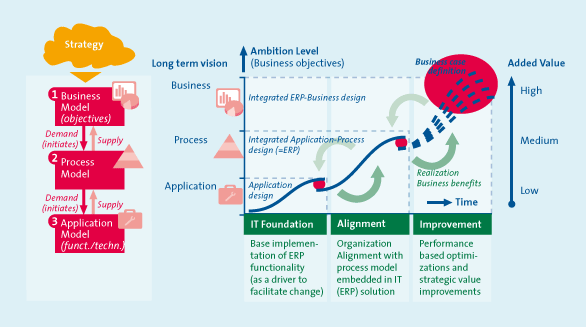
Figure 3. Implementation life cycle (source KPMG).
Creating value through your ERP
To an increasing degree, organizations are assessing the present ERP value to determine how the system can aid them in optimizing their ERP value. To do so, the organization needs to determine not only the impact on the EPR but also how this performance-based setting impacts the organization in terms of IT landscape, current processes, governance, and the company’s business and IT strategy.
In the last couple of years, there has been less focus on the business model in terms of the ERP landscape. Nevertheless, much has changed in the business model (international expansion, acquisition, globalization, etc.). Because of these business model developments, organizations are currently going through a transition in terms of reassessing the process and business model. To operate more decisively, many organizations are experiencing a phase of reassessing the ERP strategy in which unique value in the ERP environment is a hot topic. Developments like SOA, Portals and Business Intelligence are examples on how ERP can provide value creation and improved performance.
However, organizations need to be aware that the trap they faced during the first part of the growth curve also can occur during the second and final phase of the curve. The new long-term strategy needs to ensure that the curve is completed and rapid gains are used to prime IT and business to execute the strategy on tactical and operational level. The risk is that the organization will remain at the level of rapid gains, will be satisfied with the result, and will forget that there is also a long-term strategy. Commitment to the strategy by all stakeholders is essential for completing the growth curve and creating competitive value.
In this position, organizations need to ask themselves the following three questions:
- Which market developments need to be taken into account in terms of long-term strategy?
- How do these developments translate into requirements within the three layers of: business model, process, and IT?
- Having defined the requirements, how do these requirements impact the business model, processes, and IT?
To shift from being value-preservation-driven to value-creation-driven, the organization first needs to position itself in the reference model shown in Figure 4 before setting out its strategy on how to get to the next level. As discussed earlier, organizations have been preserving value by either optimizing the current processes supported by existing IT functionalities (Steady State Sustainability) or by changing existing processes and IT to gain more control (GRC Excellence). To move to performance-driven, organizations will need to grow and/or innovate. This implies better alignment between the business model and the existing processes, whereas value preservation is more about alignment between processes and the underlying IT. This leads to the conclusion that the process occupies a central position in whether to go for value preservation or value creation.
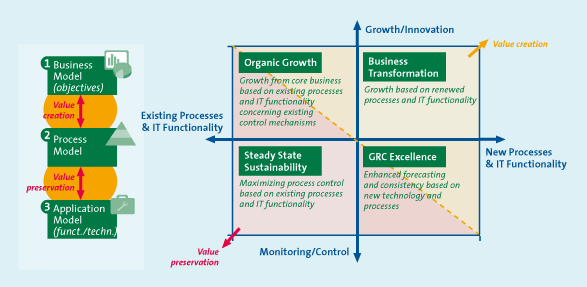
Figure 4. Value preservation versus value creation (source KPMG).
Because of the process occupying a key position within the change from value preservation to creation, organizations need to standardize and optimize their processes before being able to properly realize the business goals and create business benefits. This observation is widely confirmed by the growing number of Shared Service Centers as a common way to get one’s processes to work more efficiently for one’s organization. During this standardization process, organizations will use their IT differently. Whereas the processes were previously leading and IT had to follow, which results in many customized software and legacies, business IT alignment is currently winning ground. It’s not about the process and how IT can support it, but a mapping of standard IT solutions against process requirements and assessing how synergy can be created within both process and IT.
After all the developments of the last couple of years with SOx and the ‘Tabaksblat Code’, ERP systems are all capable of meeting the control requirements. This is not where the strength of the current EPR comes from. The additional functionalities to offer better support to the business processes should be examined and assessed with regard to how organizations can best benefit from these functionalities. Again, preservation will not bring the competitive edge.
Roadmap for change
When organizations have positioned themselves in the reference model, have set out a strategy for their new business goals, have decided how to optimize and benefit from their standardized processes, the question still remains as to how to get there. This requires clearly defined steps within a change programme. Realizing the new strategy means changing IT, changing processes and procedures, and setting new business goals (sharp financial targets, less employees, etc.). Alignment between IT, process and business goals forms the base of the roadmap to change. When there are no commonly shared goals, the new strategy will fail. The following actions might be considered when designing the roadmap to change.
Align business and IT within the roadmap
Increase collaboration between IT and line-of-business staff in order to gain the most business value within the time and budget constraints. Ensure that collaboration is taken into account on strategic, tactic and operational levels. In this way, alignment throughout the organization can be realized.
(Re)design the ERP business case
The business case is the raison d’être of the project. Besides the financial benefits, planning etc., several parts require additional attention. Resist replacement strategies that simply duplicate the business processes currently in place, do not fall into the trap of believing an ERP implementation is ever completely done, conduct an impact analysis on a detailed level (on high level there is always a fit), and come to clear (detailed) understanding of the impact of implementing the future solution on OC level (evaluation across STOEP factors). Also take into account the measures which need to be used to evaluate the success of the future design.
Evaluate, understand and communicate future solution
Start with evaluating the current situation before designing the IT kernel with the future process model and exact functionality. To do so, use the results of the detailed impact analysis as executed when designing the business case. In this way, potential problems with the future model that might cause business issues (business case approach) can be addressed. Decide how to handle these issues (changing IT kernel or changing working procedures). Do not focus on system functionality only (explaining system by showing screens) but focus on the new process in relation to system functionality (process-driven approach instead of IT-driven approach). When the future changes have been determined, build the action plan around these changes. Based on this insight, decide about future solutions and formulate a clear programme for IT change (and investment) before freezing the ERP Kernel. Communicate the ERP Kernel, the business case, the change plan, etc. to all levels within the organization.
(Re)design & implement your governance model
The key success factor is the organization’s commitment to the change plan and the future result. This commitment not only applies to the changing process but also to the period after the change has been completed. If this commitment is not arranged before the start-up, there will be a serious risk of lack of commitment to the future situation, especially when the future situation is not 100% as agreed in the business case. When designing and implementing one’s new governance model, one ought to take the following key players and processes into account:
- Identify key staff who should drive this change (change agents).
- Mobilize a key team (explain the background, tasks/challenge, timing, responsibilities, etc.) and empower the team to really drive the change.
- Install DMU in which demand and supply converge and decisions can be taken
- Mobilize deployment teams (plan and organize change). Define per OC the change delta (ist-soll) and formulate a change programme for that OC (who’s involved, the impact of the change per function, communication, training, planning/capacity required, etc.).
- Install deployment organization (roles, report structure, forms, communication platform, activity plans. etc.).
- Come to clear (detailed) understanding about the impact of implementing the future solution on OC level (evaluation across STOEP factors).
- Come to agreement on way forward (roadmap roll-out, release planning, roles & responsibilities, report structure, rules for conduct, etc.).
- Come to a clear understanding of the change (effort) per OC and determine key areas to focus on.
- Differentiate in the project management structure between a PM handling the deployment side of the project and a PM handling the IT delivery side of the project.
- Install a clear governance structure (PO-PA) to evaluate the system and to prepare decisions on issue/changes.
Transition/implementation (start moving towards the new situation)
With cumbersome implementations, organization have a tendency to start by implementing the smallest impact/change first (= collect easy gains). As explained earlier, one should avoid falling into the trap of only going for rapid gains and not realizing the long-term strategy. During implementation, organizations should always ensure that they differentiate between support capacity and roll-out capacity, and between demand capacity and supply capacity.
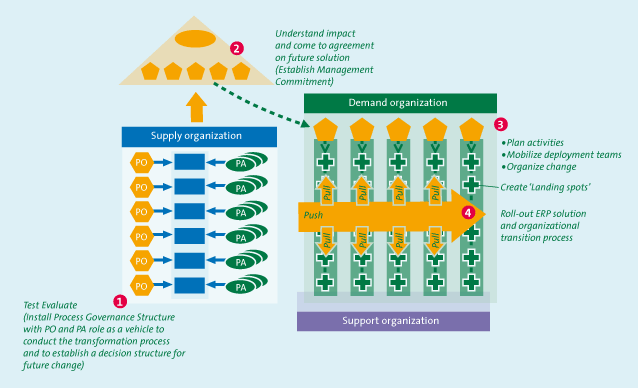
Figure 5. Aligning the supply and demand organization (source KPMG).
Measure & evaluate the success of the transition/implementation
Organizations struggle with evaluating the solution based on end-to-end processes (integral: system & manual workings procedures), since measures of success are not often defined during the initiation stage. Designing the measures of success during or after implementation cannot count on too much support and does not add value (one already knows the project results and would be able to set up measures that only focus on the successes and not on the issues). Recent research shows that organizations understand the value and importance of the process of evaluating the solution, and use many success measures to do so. As outlined throughout the article, this research confirms the importance of standardizing business processes as a starting point for the transition from value-preservation-driven to value-creation-driven.
Summary
In recent years, there has been limited focus on alignment with the business model during an ERP implementation. However, these years also witnessed many crucial developments on this strategic level (internationalization, acquisitions and mergers). These developments need to be translated to the process and application model to make sure that ERP implementation will indeed deliver the correct value.
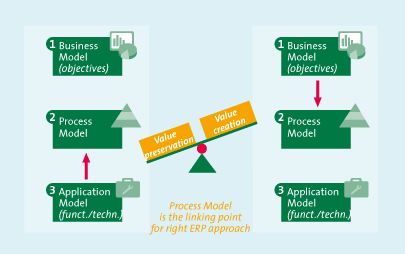
Figure 6. The correct ERP approach; a delicate balance between value preservation and value creation (source KPMG).
To optimize success, many organizations are now reconsidering their ERP strategy in order to obtain more added value from their standard ERP environment. To realize this, new techniques and products are being investigated and implemented (e.g., Service Objected Architecture, Portals and Business Intelligence development). However the risk of suboptimization will remain due to the strong short-term prerequisite of delivering quick wins. Quick wins are of course very important, but the vision that the ERP standards and that the process should comply to these standards should be the leitmotiv. To further strengthen this, an organization should strive for a strong alignment between the supply and demand organizations.
